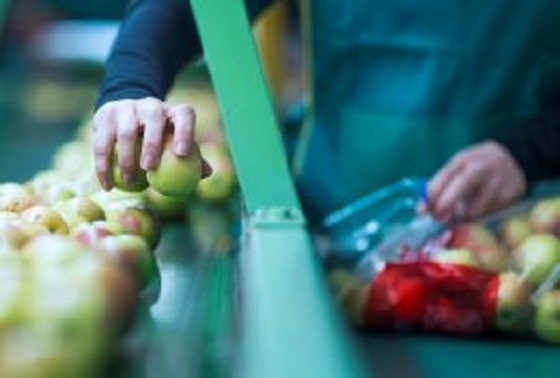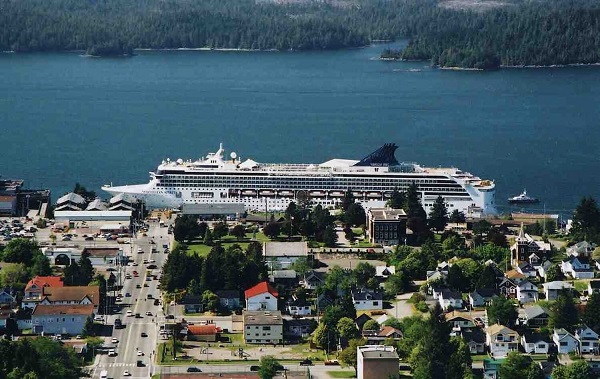Energy
From Sippy Cups to Solar Panels: Why a Blanket Ban on Plastics Misses the Mark

From EnergyNow.ca
By Canada Powered by Women
Repeated attempts by the federal government to implement a sweeping ban on plastics don’t consider the crucial role plastics play in the lives of Canadians and energy transformation.
Plastic is in many products we need every day, including medical equipment, headphones, car seats, menstrual products and computers. For mothers enjoying summer with their kids — don’t forget sippy cups, running shoes and diapers (to name a few).
In Canada, as many as 70,000 plastic products are made every day. They are essential, whether we’re working, having fun or simply trying to go about our daily lives.
The chemistry and plastics sector is also the third largest manufacturing sector in Canada, employing more than 190,000 people and shipping more than $108 billion in products in 2022.
So, this fall when the Appeals Court revisits the federal government’s move that labelled many plastics as “toxic”, engaged women from across the country are going to be watching.
They’re watching because the use of plastic touches many areas of their personal lives and interests.
Plastic is a critical component in the energy transformation (which we know engaged women care a lot about) and it’s intricately connected to the development and deployment of renewable energy technologies. These are important considerations for our country’s broader energy policy and sustainability goals, and engaged women are paying attention because they’re not convinced Canada has energy policies that positively affect prosperity.
Engaged women in Canada have also told us they want a balanced approach on the environment, energy and economic prosperity. As a result, their understanding of policies is deepening, and they are focusing on long-term prosperity and affordability while striving for a well-rounded strategy when it comes to policymaking.
So how did we get here with the plastics issue, and what happens next?
The single-use plastic ban that started it all
In 2019, the federal government announced it would seek to ban single-use plastic items such as straws, cutlery, take out containers, stir sticks and plastic bags to reduce plastic waste.
The ban came into effect in 2022 after the federal government added all plastic manufactured items (PMIs) to a toxic substance list (a key step in allowing it to ban these items).
Waste management is a provincial responsibility, but the federal government is able to regulate substances for environmental protection if they are listed as toxic under the Canadian Environmental Protection Act.
In 2023, a federal court reviewed the legislation after complaints surfaced saying Ottawa failed to demonstrate enough scientific evidence to justify the sweeping regulations.
The court agreed, ruling that the federal government exceeded its authority by listing all PMIs as toxic, calling the move “unreasonable and unconstitutional”.
The federal government appealed the decision, and on June 25-26 this year, the Federal Appeals Court heard arguments for and against listing all PMIs as toxic.
A decision on the appeal is expected this fall, and the outcome of the ruling has many concerned about what future bans and other restrictive regulations and policies will mean for everyday Canadians.
How plastics restrictions could hurt Canadians
Christa Seaman, vice-president of the plastics division with the Chemistry Industry Association of Canada, says further restrictions on using plastic will have serious ramifications.
“If we start to take away plastic packaging that’s keeping our food safe, for example, you’ll actually see increased cost to consumers because food is going to spoil before it gets to market or shipping is going to be more expensive because the packaging for the products are going to weigh more,” says Seaman.
Seaman also highlights restrictions on plastics could limit the availability of certain products that rely on plastic packaging or components, and Canadians may have reduced access to the variety of inexpensive goods we use today.
Plastics play a big role in low-carbon technology development
There are sustainable ways to keep plastics out of the environment and in the economy, Seaman says, particularly because of the key role they’re already playing in the proliferation of green technologies.
For example, batteries in electric vehicles (EVs) are heavier than in vehicles with internal combustion engines so plastics are being used to manufacture EVs.
“Plastics, being lightweight and durable, are key to keeping the weight of the vehicle down,” she says. “We have less wear and tear on our roads and we’re actually able to increase the driving range per charge, without compromising safety at all.”
Plastics also make renewable energy sources like wind and solar possible, Seaman says. They are a key component in solar panels, and blades of wind turbines are made with fibreglass and other plastic composite materials.
Rather than an outright ban on plastics, we’d be better off exploring how a circular economy — one that includes the appropriate use, reuse and recycling of plastics — can keep plastic waste out of the environment and create a more sustainable future.
Some provinces and territories have also initiated an important shift in responsibility by making producers of plastic products responsible for funding their collection and recycling, Seaman says.
“Provinces are setting the guidelines on achieving certain benchmarks and targets for recyclability, which will go back to how the products are designed,” she says. “The cheaper and easier it is to recycle, the less they’re going to have to spend on the recycling system in the end.”
Seaman says the industry goal is to focus on reduction first by making packaging smaller or thinner. Then the focus turns to reusing plastics, and once those options are exhausted the goal is to recycle.
What we need from policymakers
Listing all plastics as toxic, and then implementing bans around their use, is heavy-handed and misguided.
Seaman says a collaborative approach between policymakers and producers is what’s needed now, and policy should reflect what’s best for the public, the environment and the economy.
“We need all solutions to be on the table: your compostable, your biodegradable, your advanced recycling, your mechanical recycling.”
Seaman says the focus should be placed on outcome-based regulations and science.
“Let’s talk about the outcomes we’re all trying to achieve, because nobody wants to see plastics in the environment, in the waterways or in landfill. Let’s look at what targets need to be and find a way to get there together.”
Business
Inflation Reduction Act, Green New Deal Causing America’s Energy Crisis


From the Daily Caller News Foundation
By Greg Blackie
Our country is facing an energy crisis. No, not because of new demand from data centers or AI. Instead, it’s because utilities in nearly every state, due to government imposed “renewable” mandates, self-imposed mandates, and the supercharging of the Green New Scam under the so-called “Inflation Reduction Act,” have been shutting down vital coal resources and building out almost exclusively intermittent and costly resources like solar, wind, and battery storage.
President Donald Trump understands this, and that is why on day one of his administration he declared an Energy Emergency. Then, a few months later, the President signed a trio of Executive Orders designed to keep our “beautiful, clean coal” burning and providing the reliable, baseload, and affordable electricity Americans have benefitted from for generations.
Those orders have been used to keep coal generation online that was slated to shut down in Michigan and will potentially keep two units operating that were scheduled to shut down in Colorado this December. In Arizona, however, the Cholla Power Plant in Navajo County was shuttered by the utility just weeks after Trump explicitly called out the plant for saving in a press conference.
Dear Readers:
As a nonprofit, we are dependent on the generosity of our readers.
Please consider making a small donation of any amount here.
Thank you!
Unlike states with green mandates, Arizona essentially has none. Instead, our utilities, like many around the country, have self-imposed commitments to go “Net Zero” by 2050. To meet that target, they have planned to shut down all coal generation in the state by 2032 and plan to build out almost exclusively solar, wind, and battery storage to meet an expected explosive growth in demand, at a cost of tens of billions of dollars. So it is no surprise that like much of the rest of the country, Arizona is facing an energy crisis.
Taking a look at our largest regulated utilities (APS, TEP, and UNS) and the largest nonprofit utility, SRP, future plans paint an alarming picture. Combined, over the next 15 years, these utilities expect to see demand increase from 19,200 MW to 28,000 MW. For reference, 1,000 MW of electricity is enough to power roughly 250,000 homes. To meet that growth in demand, however, Arizonans will only get a net increase of 989 MW of reliable generation (coal, natural gas, and nuclear) compared to 22,543 MW (or nearly 23 times as much) of intermittent solar, wind, and battery storage.
But what about all of the new natural gas coming into the state? The vast majority of it will be eaten up just to replace existing coal resources, not to bring additional affordable energy to the grid. For example, the SRP board recently voted to approve the conversion of their Springerville coal plant to natural gas by 2030, which follows an earlier vote to convert another of their coal plants, Coronado, to natural gas by 2029. This coal conversion trap leaves ratepayers with the same amount of energy as before, eating up new natural gas capacity, without the benefit of more electricity.
So, while the Arizona utilities plan to collectively build an additional 4,538 MW of natural gas capacity over the next 15 years, at the same time they will be removing -3,549 MW (all of what is left on the grid today) of coal. And there are no plans for more nuclear capacity anytime soon. Instead, to meet their voluntary climate commitments, utilities plan to saddle ratepayers with the cost and resultant blackouts of the green new scam.
It’s no surprise then that Arizona’s largest regulated utilities, APS and TEP, are seeking double digit rate hikes next year. It’s not just Arizona. Excel customers in Colorado (with a 100% clean energy commitment) and in Minnesota (also with a 100% clean energy commitment) are facing nearly double-digit rate hikes. The day before Thanksgiving, PPL customers in Rhode Island (with a state mandate of 100% renewable by 2033) found out they may see rate hikes next year. Dominion (who has a Net Zero by 2050 commitment) wanted to raise rates for customers in Virginia by 15%. Just last month, regulators approved a 9% increase. Importantly, these rate increases are to recover costs for expenses incurred years ago, meaning they are clearly to cover the costs of the energy “transition” supercharged under the Biden administration, not from increased demand from data centers and AI.
It’s the same story around the country. Electricity rates are rising. Reliability is crumbling. We know the cause. For generations, we’ve been able to provide reliable energy at an affordable cost. The only variable that has changed has been what we are choosing to build. Then, it was reliable, dispatchable power. Now, it is intermittent sources that we know cost more, and that we know cause blackouts, all to meet absurd goals of going 100% renewable – something that no utility, state, or country has been able to achieve. And we know the result when they try.
This crisis can be avoided. Trump has laid out the plan to unleash American Energy. Now, it’s time for utilities to drop their costly green new scam commitments and go back to building reliable and affordable power that generations to come will benefit from.
Greg Blackie, Deputy Director of Policy at the Arizona Free Enterprise Club. Greg graduated summa cum laude from Arizona State University with a B.S. in Political Science in 2019. He served as a policy intern with the Republican caucus at the Arizona House of Representatives and covered Arizona political campaigns for America Rising during the 2020 election cycle.
Automotive
Politicians should be honest about environmental pros and cons of electric vehicles

From the Fraser Institute
By Annika Segelhorst and Elmira Aliakbari
According to Steven Guilbeault, former environment minister under Justin Trudeau and former member of Prime Minister Carney’s cabinet, “Switching to an electric vehicle is one of the most impactful things Canadians can do to help fight climate change.”
And the Carney government has only paused Trudeau’s electric vehicle (EV) sales mandate to conduct a “review” of the policy, despite industry pressure to scrap the policy altogether.
So clearly, according to policymakers in Ottawa, EVs are essentially “zero emission” and thus good for environment.
But is that true?
Clearly, EVs have some environmental advantages over traditional gasoline-powered vehicles. Unlike cars with engines that directly burn fossil fuels, EVs do not produce tailpipe emissions of pollutants such as nitrogen dioxide and carbon monoxide, and do not release greenhouse gases (GHGs) such as carbon dioxide. These benefits are real. But when you consider the entire lifecycle of an EV, the picture becomes much more complicated.
Unlike traditional gasoline-powered vehicles, battery-powered EVs and plug-in hybrids generate most of their GHG emissions before the vehicles roll off the assembly line. Compared with conventional gas-powered cars, EVs typically require more fossil fuel energy to manufacture, largely because to produce EVs batteries, producers require a variety of mined materials including cobalt, graphite, lithium, manganese and nickel, which all take lots of energy to extract and process. Once these raw materials are mined, processed and transported across often vast distances to manufacturing sites, they must be assembled into battery packs. Consequently, the manufacturing process of an EV—from the initial mining of materials to final assembly—produces twice the quantity of GHGs (on average) as the manufacturing process for a comparable gas-powered car.
Once an EV is on the road, its carbon footprint depends on how the electricity used to charge its battery is generated. According to a report from the Canada Energy Regulator (the federal agency responsible for overseeing oil, gas and electric utilities), in British Columbia, Manitoba, Quebec and Ontario, electricity is largely produced from low- or even zero-carbon sources such as hydro, so EVs in these provinces have a low level of “indirect” emissions.
However, in other provinces—particularly Alberta, Saskatchewan and Nova Scotia—electricity generation is more heavily reliant on fossil fuels such as coal and natural gas, so EVs produce much higher indirect emissions. And according to research from the University of Toronto, in coal-dependent U.S. states such as West Virginia, an EV can emit about 6 per cent more GHG emissions over its entire lifetime—from initial mining, manufacturing and charging to eventual disposal—than a gas-powered vehicle of the same size. This means that in regions with especially coal-dependent energy grids, EVs could impose more climate costs than benefits. Put simply, for an EV to help meaningfully reduce emissions while on the road, its electricity must come from low-carbon electricity sources—something that does not happen in certain areas of Canada and the United States.
Finally, even after an EV is off the road, it continues to produce emissions, mainly because of the battery. EV batteries contain components that are energy-intensive to extract but also notoriously challenging to recycle. While EV battery recycling technologies are still emerging, approximately 5 per cent of lithium-ion batteries, which are commonly used in EVs, are actually recycled worldwide. This means that most new EVs feature batteries with no recycled components—further weakening the environmental benefit of EVs.
So what’s the final analysis? The technology continues to evolve and therefore the calculations will continue to change. But right now, while electric vehicles clearly help reduce tailpipe emissions, they’re not necessarily “zero emission” vehicles. And after you consider the full lifecycle—manufacturing, charging, scrapping—a more accurate picture of their environmental impact comes into view.
-

 Alberta2 days ago
Alberta2 days agoThe Recall Trap: 21 Alberta MLA’s face recall petitions
-

 illegal immigration2 days ago
illegal immigration2 days agoUS Notes 2.5 million illegals out and counting
-

 International2 days ago
International2 days agoTyler Robinson shows no remorse in first court appearance for Kirk assassination
-

 Energy2 days ago
Energy2 days agoCanada’s future prosperity runs through the northwest coast
-

 Daily Caller1 day ago
Daily Caller1 day ago‘There Will Be Very Serious Retaliation’: Two American Servicemen, Interpreter Killed In Syrian Attack
-

 Business19 hours ago
Business19 hours agoInflation Reduction Act, Green New Deal Causing America’s Energy Crisis
-

 Automotive1 day ago
Automotive1 day agoPoliticians should be honest about environmental pros and cons of electric vehicles
-

 Crime13 hours ago
Crime13 hours agoTerror in Australia: 12 killed after gunmen open fire on Hanukkah celebration











